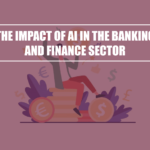The past few years have seen significant disruption led by young, innovative tech companies in the area of automated decision-making. Most business leaders are using cognitive technologies to enhance and improve customer experience and expand their reach far beyond the accepted industry borders. These technologies are offering a broad scope of improvements and are developing rapidly.
While digitization and automation are making the internal bank processes more efficient, it is also enhancing the customer offering with value-added services such as wallet solutions, personal finance management tools, etc. Many banks have been experimenting with rapid-automation processes to achieve promising results. Results have been positive in proving that automating end-to-end processes for banks that took up 12 to 18 months usually, is now being completed in 6 months. Another significant benefit is that it is only taking up half the investment of what is typically required.
Principles of automating decision-making at banks:
- A cross-functional team consisting of operations, IT, and business experts, as well as strong project governance, must design and enforce an optimal end-to-end solution that considers business priorities while simplifying the process. Automating inefficiencies or unnecessary product features can prove to be pointless.
- Banks must use multiple integration technologies and approaches to find the right mix of integration solutions, backed by a reliable evaluation of each solution’s time to market and contribution to architectural complexity. The process must enable banks to automate most of their manual interventions without rewriting or substituting structural building blocks.
- Banks must hire or train people who can assess the software market and apply the right solutions, as well as develop systems in-house; to run agile or iterative development projects. These people should also be capable of working seamlessly with business and operations counterparts by building skills beyond their traditional capabilities.
How are the banks transforming?
The primary uses and benefits of automating decision-making for banks include:
- Personalization: Insight-driven banks collect data about their clients and extract knowledge from that data to shape a tailored customer experience. This customization is enabled by recommendation systems. Recommendation systems are incredibly effective as they can analyze transaction data and make customized suggestions to clients on saving their money. It also examines the behavior of other customers with similar attributes, and recommend products that are similar to what has worked for them.
- Workforce Augmentation: Fraudulent activities can cost heavily to banks. Earlier, fraud detection used a rule-based pattern-matching approach, which was extremely time-consuming to maintain, and usually ineffective in competing with the ever-evolving fraud techniques. With the help of machine-learning banks are now able to detect such practices with higher accuracy and identify suspicious activities sooner. This has led to faster and more accurate fraud detection as well as a reduction in false alarms.
- Balance of automation: Once automated decision-making is applied to the business, it creates opportunities that go beyond automating a single process or transaction. With the help of automation, some banks already use real-time classification of their customer spend. This information can be used effectively to provide an analysis of their expenditure to customers. This analysis can be used as an input for the recommendation engine to advice customers on how to save money, or what products to invest in.
The process of automating decision- making at banks enable the majority of fundamental decisions to be automated. It is saving the valuable time of their best people and using it for where it matters. It is rapidly transforming how banks deliver services and also opening more avenues and creating new automation opportunities for banks in return.























Write a Reply or Comment